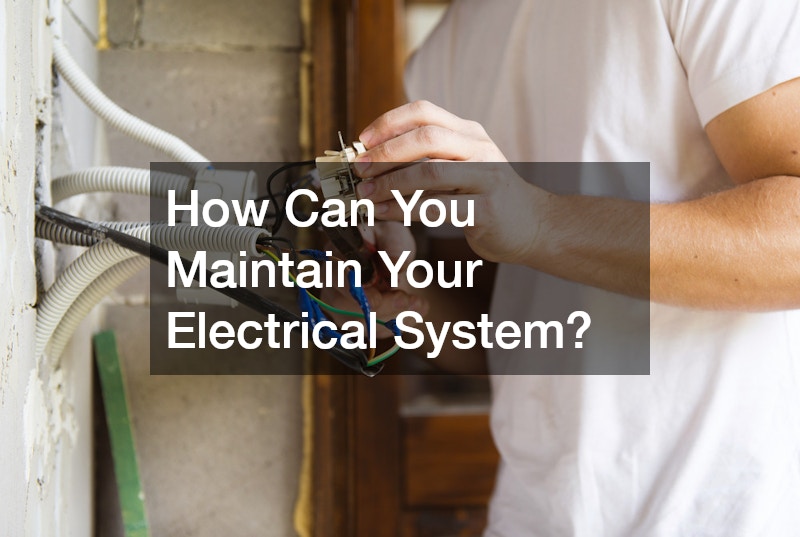This article provides essential information about electrical repair, addressing common questions and key topics to help you understand the complexities and safety considerations. Whether you’re a homeowner looking to handle minor repairs or simply wanting to understand more about maintaining your electrical system, this guide covers the basics and beyond.
What Are the Basic Tools Needed for Electrical Repair?
Essential Hand Tools
The foundation of any electrical repair task lies in having the right hand tools. Screwdrivers, pliers, and wire strippers are essential in managing simple repairs and ensuring connections are secure.
These tools are readily available and relatively affordable investments for any DIY enthusiast. Owning quality hand tools not only makes the work safer but also helps ensure it is done correctly.
Having a variety of pliers and screwdrivers—such as needle nose and flathead—further expands your ability to tackle different tasks. These tools are often the first line of equipment used in diagnosing and addressing basic electrical issues.
Advanced Tools and Equipment
For those looking to delve deeper into electrical repairs, investing in advanced tools like multimeters and circuit testers is crucial. These tools provide detailed insights into the health and functionality of your electrical systems.
Multimeters can measure voltage, current, and resistance and are essential for more complex diagnostics. Meanwhile, circuit testers help determine if an electrical current is present, aiding in troubleshooting and safety assurance.
Advanced tools are invaluable in preventing and detecting electrical hazards before they manifest into serious problems. Their use requires a basic understanding of how to read and interpret their measurements effectively.
How Do You Safely Conduct Electrical Repairs?
Understanding Electrical Safety Guidelines
Safety is paramount when working with electricity to avoid injury or fire hazards. One must adhere to fundamental rules such as turning off the power at the breaker box and using insulated tools.
Wearing personal protective equipment, like safety goggles and rubber-soled shoes, can provide an extra layer of safety. These precautions minimize the risk of electrical shocks and burns.
It’s also important to never work on live circuits and to double-check that power is off before commencing any repair. Following these guidelines helps protect yourself and others from potentially dangerous situations.
Common Electrical Hazards
Electrical hazards, such as shocks and short circuits, account for numerous injuries and household errors. Awareness and mitigation of these risks are vital for any DIY electrician.
Ensuring your tools and equipment are in good working condition reduces the risk of malfunctions. Proper handling and understanding of electrical currents help in avoiding unexpected accidents.
Regular inspection of cords and outlets for frayed wiring or wear and tear also helps prevent accidents. Proactively managing potential risks can significantly diminish the likelihood of hazards occurring.
When Should You Call a Professional Electrician?
Signs of Complex Electrical Issues
Recognizing when to seek professional help is essential in preventing danger. Frequent breaker trips and buzzing noises are indicators that your home’s electrical system may require expert attention.
Professionals have the technical knowledge and experience required to diagnose and repair these complex issues safely. Failing to address such signs can lead to increased danger reaching beyond just inconveniences like power loss.
Abnormal heating in switches or outlets is another common warning sign. A professional assessment ensures proper identification and resolution of complicated underlying problems.
Understanding the Limits of DIY Repairs
While many minor repairs can be managed independently, recognizing the boundaries of your skill set safely is imperative. DIY is not recommended for tasks that involve large-scale rewiring or circuit breaker panel repairs.
There are legal restrictions and code compliance to consider, which professionals are expected to navigate. Undertaking tasks beyond your capabilities can risk safety and incur higher costs later on.
Consulting a licensed electrician often prevents complications arising from improper repairs. In complex scenarios, expert oversight mitigates risks and maintains overall system integrity.
What Are the Common Electrical Problems in Homes?
Issues with Wiring and Connections
Problems with wiring and connections are a frequent issue in many homes. Loose connections or outdated wiring can pose significant safety hazards, including fire risk.
Addressing these issues promptly ensures they don’t progress to more severe problems, compromising household safety. Correct installation and regular checks of wiring and connections prevent future complications.
The importance of maintaining secure electrical connections cannot be overstated. This foundational aspect ensures both the efficiency and safety of the system at large.
Power Surges and Overloaded Circuits
Power surges, often caused by lightning strikes or transformer issues, are a leading cause of damage to appliances. Installing surge protectors helps prevent these from affecting your home.
Overloading circuits by plugging in too many devices can lead to circuit breaker trips, posing hazards. Regular monitoring of your appliance load helps maintain a balance and prevents these from occurring.
Implementing preventive measures, like surge protectors, helps maintain the longevity of appliances. Awareness and active management of circuit loads contribute to preventing overloads and enhancing home safety.
How Can You Maintain Your Electrical System?
Regular Inspection and Maintenance
Routine checks are a proactive approach to ensuring the longevity of your electrical systems. Conducting inspections helps identify potential issues early, improving safety.
Scheduled maintenance ensures your systems operate efficiently, reducing the likelihood of major repairs. It empowers homeowners by granting insight into the condition and necessary upgrades of their systems.
Committing to regular maintenance helps optimize energy use and lower utility costs. This proactive approach supports early detection of issues, maintaining a safe environment.
Upgrading Components for Safety and Efficiency
Keeping your systems up to date with new technologies like smart systems or surge protectors can enhance safety. Upgrading singular components, like adding GFCI outlets, helps prevent potential risks.
Strategic upgrades not only ensure safety but also improve energy efficiency, translating to cost savings over time. The evolving electrical landscape offers insights into safer, more efficient operation techniques.
Revisiting older installations and updating them can also eliminate redundant energy consumption. Modernizing these elements fosters a safer, more intelligent home environment.
.

